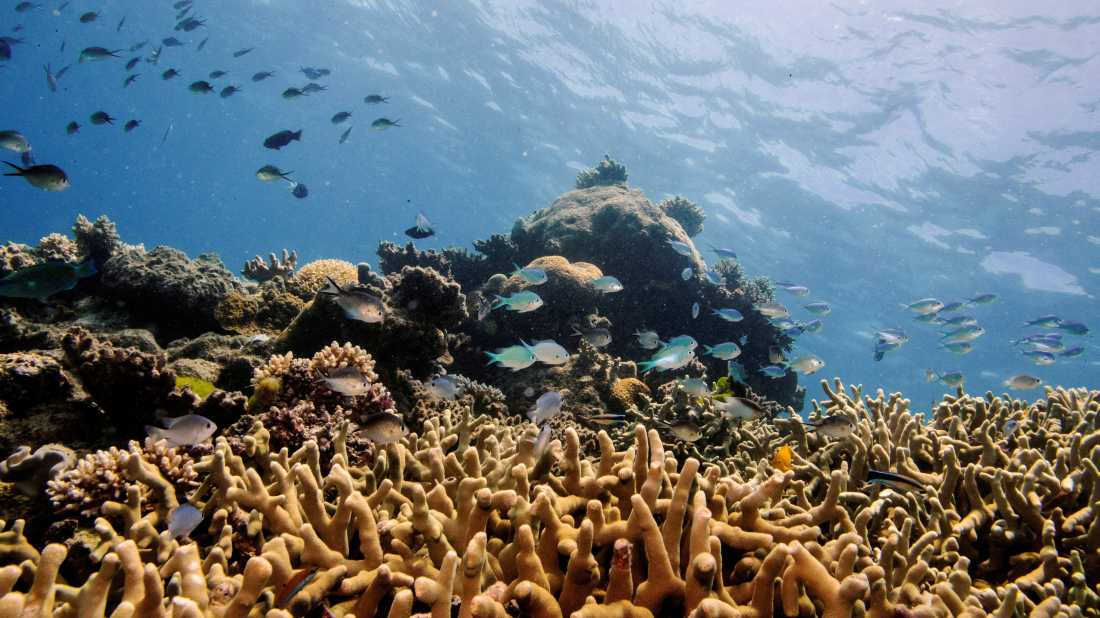UN Chief: Gaza Hunger Gains Still Fragile
UN Secretary-General Antonio Guterres has issued a stark warning over the humanitarian situation in the Gaza Strip....

The Great Barrier Reef has suffered its most significant coral decline in nearly four decades, according to a report released on Wednesday by the Australian Institute of Marine Sciences (AIMS).
The reef’s northern and southern zones recorded the steepest annual drop in hard coral cover since AIMS began monitoring the ecosystem 39 years ago. Coral loss ranged from 25% to 33%, reversing recent years of steady growth.
Mike Emslie, who leads AIMS' long-term monitoring programme, said the system is displaying signs of distress.
“We are now seeing increased volatility in the levels of hard coral cover,” he explained, adding, “This is a phenomenon that emerged over the last 15 years and points to an ecosystem under stress.”
The reef, which stretches 2,400 kilometres off Queensland's coast, is the world’s largest living structure and a critical marine habitat. It has endured five mass coral bleaching events since 2016, caused by extreme heat linked to climate change.
The 2024 bleaching episode was the most extensive ever recorded, with “high to extreme” bleaching reported across all three reef regions, AIMS said.
Despite these alarming findings, the Great Barrier Reef has not been added to UNESCO’s list of world heritage sites in danger. However, the UN body has maintained its recommendation for such a listing, citing ongoing environmental threats.
Australia, which earns A$6.4 billion ($4.2 billion) annually from reef-related tourism, has repeatedly lobbied against the designation, warning it could affect international visitor numbers.
The federal government has committed funding and introduced climate adaptation measures, but environmental groups say more aggressive action is needed to curb carbon emissions and protect the reef.
Ukraine has welcomed the European Union’s decision to provide €90 billion in support over the next two years, calling it a vital lifeline even as the bloc failed to reach agreement on using frozen Russian assets to finance the aid.
European Union foreign policy chief Kaja Kallas has warned that attempts to reach a peace agreement in Ukraine are being undermined by Russia’s continued refusal to engage meaningfully in negotiations.
Petroleum products are being transported by rail from Azerbaijan to Armenia for the first time in decades. The move is hailed as a tangible breakthrough in efforts to normalise relations between the long-time rivals.
A rare pair of bright-green Nike “Grinch” sneakers worn and signed by the late NBA legend Kobe Bryant have gone on public display in Beverly Hills, ahead of an auction that could set a new record for sports memorabilia.
Chinese Foreign Minister Wang Yi has held a phone conversation with his Venezuelan counterpart Yvan Gil at the latter’s request.
Dense smog has forced authorities in Pakistan’s Punjab province to shut several major motorways on Tuesday (16 December), stranding commuters as visibility dropped sharply and Lahore’s air quality reached hazardous levels.
At least 37 people have been killed in flash floods triggered by torrential rain in Morocco's Atlantic coastal province of Safi, Moroccan authorities said on Monday (15 December).
Climatologists say Poland has logged its warmest December in 74 years, with 2025 continuing a run of above-average temperatures and repeated national records.
As the world marks the tenth anniversary of the Paris Agreement, progress in combating global climate change is mixed.
An extratropical cyclone has caused widespread disruption across Brazil’s São Paulo state, with powerful winds toppling trees and power lines, blocking streets and leaving large parts of the region without electricity.
You can download the AnewZ application from Play Store and the App Store.

What is your opinion on this topic?
Leave the first comment